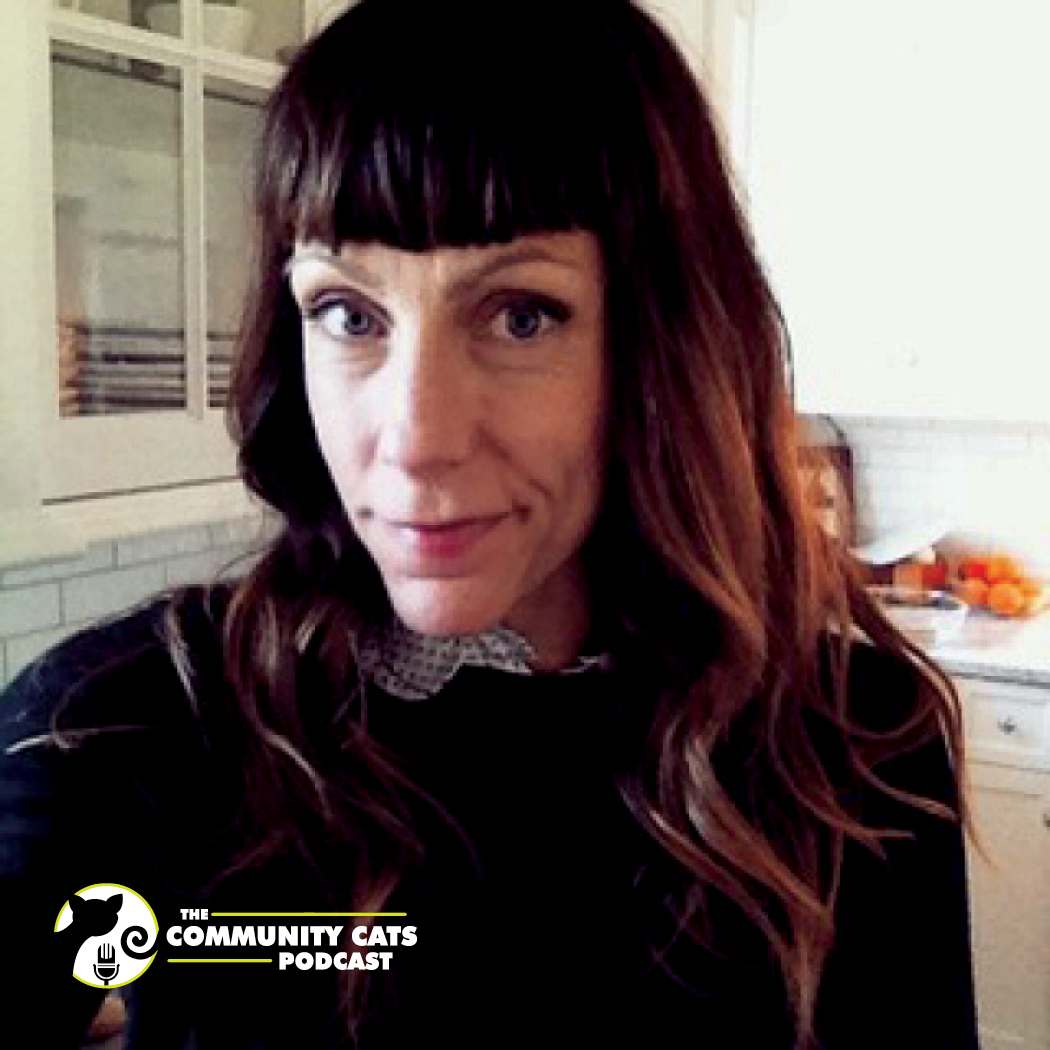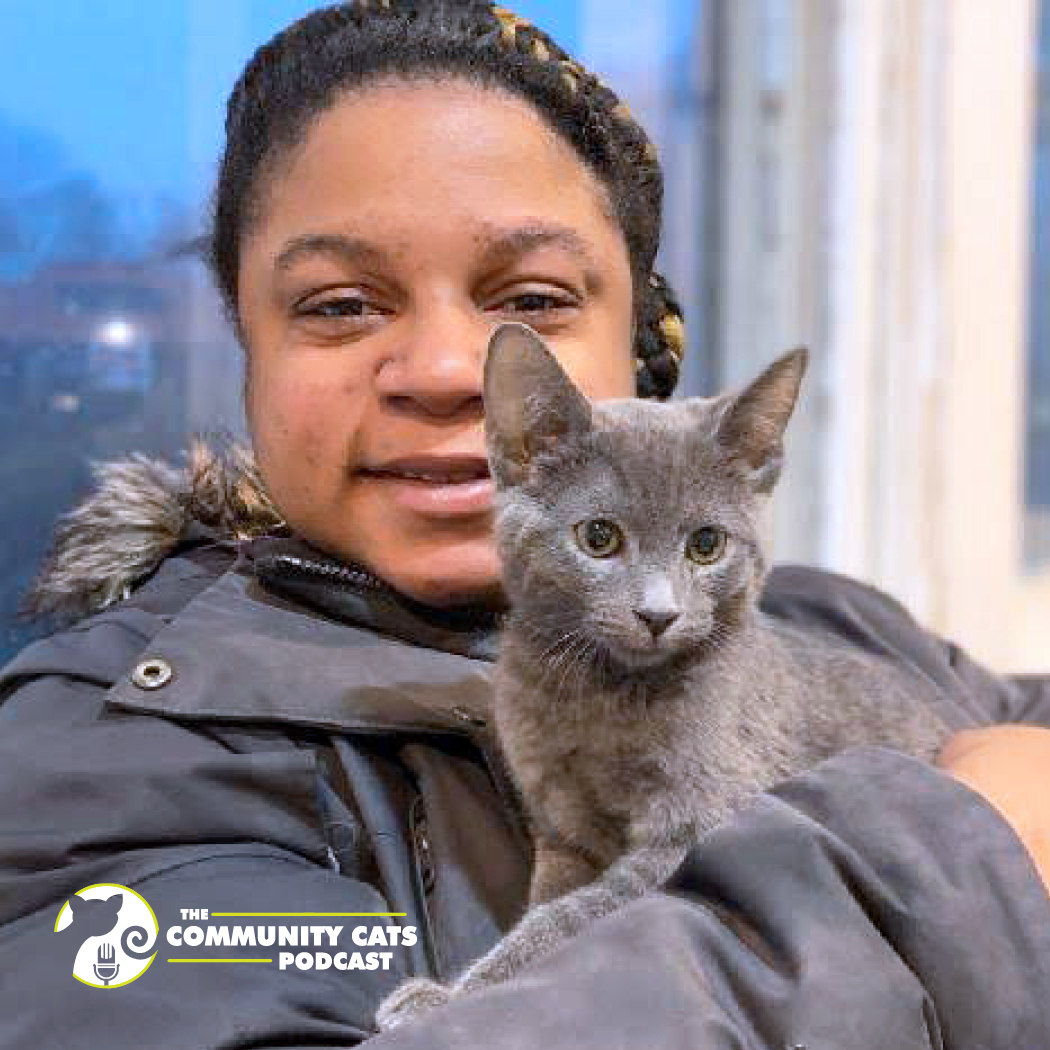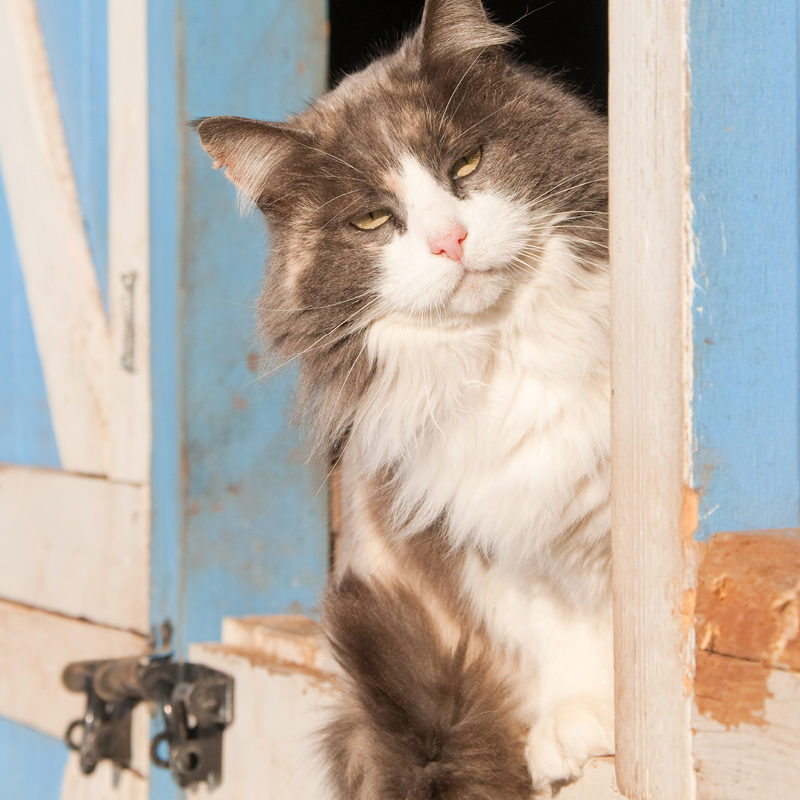
Sarah Dunsmore, CDE Animal Cages
September 22, 2020
Jennifer Barnes, Trapper & Animal Welfare Advocate
September 29, 2020
Today’s guest post comes to us from Krista Beucler, Marketing & Communications Intern at Community Cats Podcast.
Employing a feral working cat at your barn, warehouse, vineyard, garden center, or workshop serves the dual purpose of controlling the rodent population and helping a feral cat find a safe place to live. As a horse owner, Jean stores a lot of grain in her barn that many rodents are eager to get into. Having a working cat means she doesn’t have to use poison or traps to control the problem.
 When Jean adopted her feral barn cat Cheyenne, she was advised by the shelter to keep her confined for the first four to five weeks. They recommend this so that the cat could get used to her new surroundings and wouldn’t immediately take off when let out. Jean brought Cheyenne to live in the tack room of her barn—and then she didn’t see the cat for the first three months. Cheyenne was very scared and stayed hidden under some shelving, only coming out to eat when Jean had left. Jean was worried about letting Cheyenne out of the tack room, even after three months, because she didn’t know if she’d ever see the cat again once she did. Because Jean lives in an area with active coyotes and owls that have been known to snatch small dogs, it was really important to her that Cheyenne come back each evening to be locked safely in the tack room for the night
When Jean adopted her feral barn cat Cheyenne, she was advised by the shelter to keep her confined for the first four to five weeks. They recommend this so that the cat could get used to her new surroundings and wouldn’t immediately take off when let out. Jean brought Cheyenne to live in the tack room of her barn—and then she didn’t see the cat for the first three months. Cheyenne was very scared and stayed hidden under some shelving, only coming out to eat when Jean had left. Jean was worried about letting Cheyenne out of the tack room, even after three months, because she didn’t know if she’d ever see the cat again once she did. Because Jean lives in an area with active coyotes and owls that have been known to snatch small dogs, it was really important to her that Cheyenne come back each evening to be locked safely in the tack room for the night
If you don’t have a room or a shed to keep your barn cat in during the first four to five weeks, you can get an extra-large dog kennel (some shelters will lend you one for your cat’s confinement) with the cat’s litter box, food and water inside. You should partially cover the kennel with a sheet or provide a box in the kennel to give the cat a place to hide. You’ll also want to find a safe place out of the weather to locate the kennel in for the adjustment period.
After three months, Jean began letting Cheyenne out during the day and coaxing her back into the tack room every night with wet food. At first, Cheyenne wouldn’t eat until Jean had left the room, but gradually, Jean began trying to socialize her. She started by staying in the tack room during the cat’s feeding, so Cheyenne got used to coming out while Jean was there. Jean slowly moved the food closer and closer to her so that Cheyenne had to come close to her to eat. This helped the cat associate good things with her new human caretaker. Eventually, Jean was able to pet Cheyenne while she ate.
Like feeding a feral colony, it’s good to establish a feeding pattern with your working cat. Depending on how socialized your cat is, you may need to trap her again for vet checkups, and a feeding pattern can help you do this. Jean feeds wet food every night, which helps entice Cheyenne back into the safety of her tack room for the night. Though Cheyenne is a hunter and does eat some of the mice and rabbits she catches, she always has access to dry food and freshwater and gets her wet food every evening. Even if your working cat is catching a lot of rodents, it’s important to provide food for her as well. Make sure it’s good quality food to keep her healthy and in her best hunting form. Just remember to keep your cat’s food in a place that is less likely to attract other animals.
The tack room and barn provide Cheyenne with shelter and protection from most of the elements, but sometimes Colorado winters can get pretty cold, so Cheyenne has an electric heated house she can go in when it’s really cold. If you don’t want to buy an expensive cat house, you can make one or modify a doghouse. Alley Cat Allies suggests a cat house be 2 feet by 3 feet and at least 18 inches high. Straw (not hay!) is a good bedding option because it doesn’t trap moisture or dampness the way towels or blankets do. Cheyenne also has an electric water bowl that keeps her water from freezing in the winter.
It’s typical for working cats to be placed in pairs. The pairs should be bonded cats that can help each other ease the transition and adjust to their new homes. It can also help the cats learn to socialize with people, especially if one of the cats is a little more outgoing. Cheyenne didn’t have a bonded cat, and the working cat program at her shelter was quite young, so Cheyenne came to her new home alone, which may have contributed to how long it took her to adjust.
The key, Jean says, is patience. Cheyenne is still, and probably always will be, a little skittish and doesn’t like big crowds, or people reaching for her. It’s important to remember that your working cat spent most of her life outside as a feral cat, fending for herself. She will probably never reach the level of socialization of a house cat, but some socialization is often achievable—and important for things like going to the vet.
Do you have a working cat? We’d love to hear about your experience!
 Originally from Colorado, Krista Beucler received a Bachelor of Arts in creative writing at the University of Mary Washington (UMW) in Virginia. She was the editor-in-chief for Issue 7.2 of the Rappahannock Review, the literary journal published by UMW. Krista’s creative work has been published in From Whispers to Roars literary magazine. She is spending COVID-19 at home with her cats.
Originally from Colorado, Krista Beucler received a Bachelor of Arts in creative writing at the University of Mary Washington (UMW) in Virginia. She was the editor-in-chief for Issue 7.2 of the Rappahannock Review, the literary journal published by UMW. Krista’s creative work has been published in From Whispers to Roars literary magazine. She is spending COVID-19 at home with her cats.




